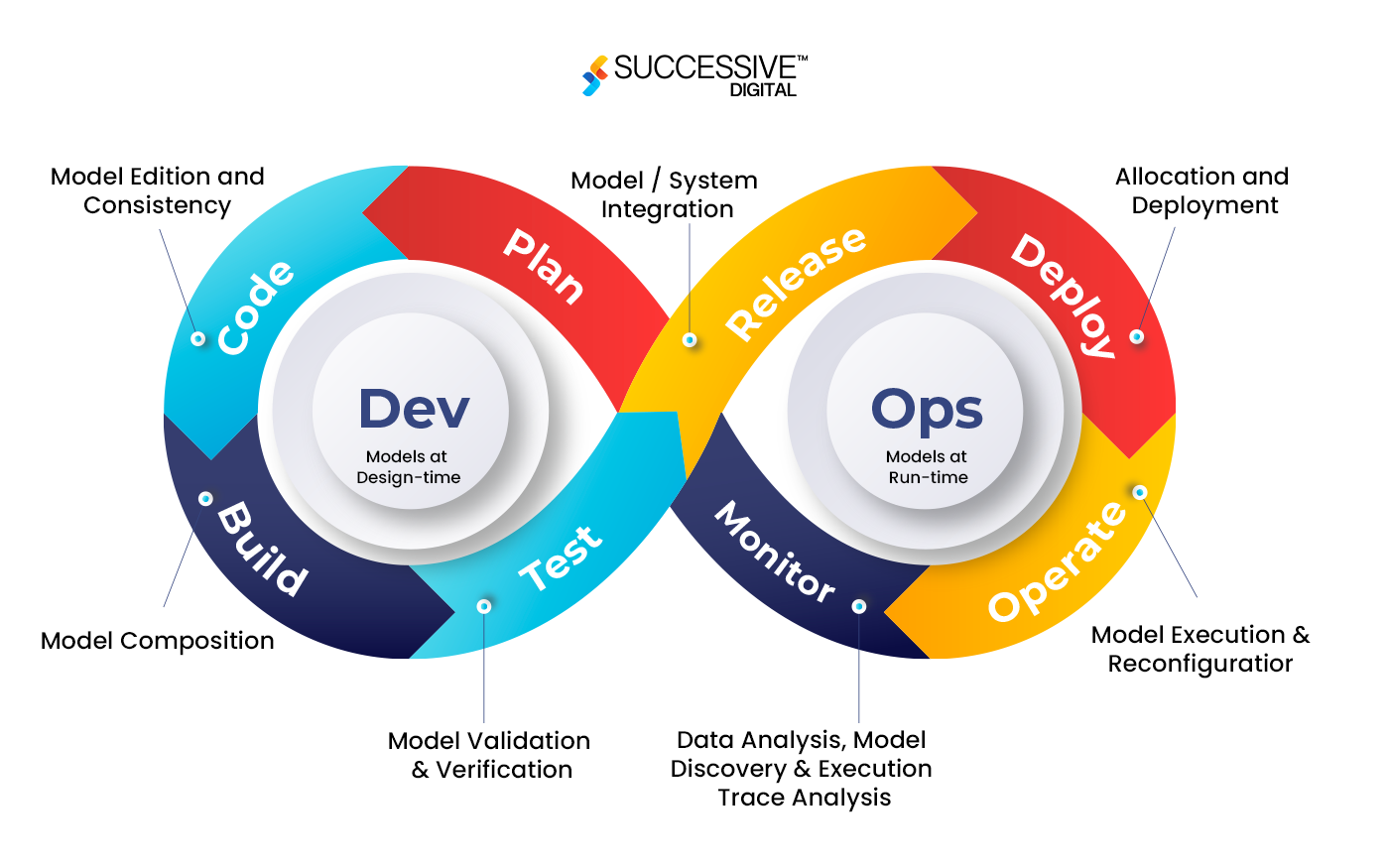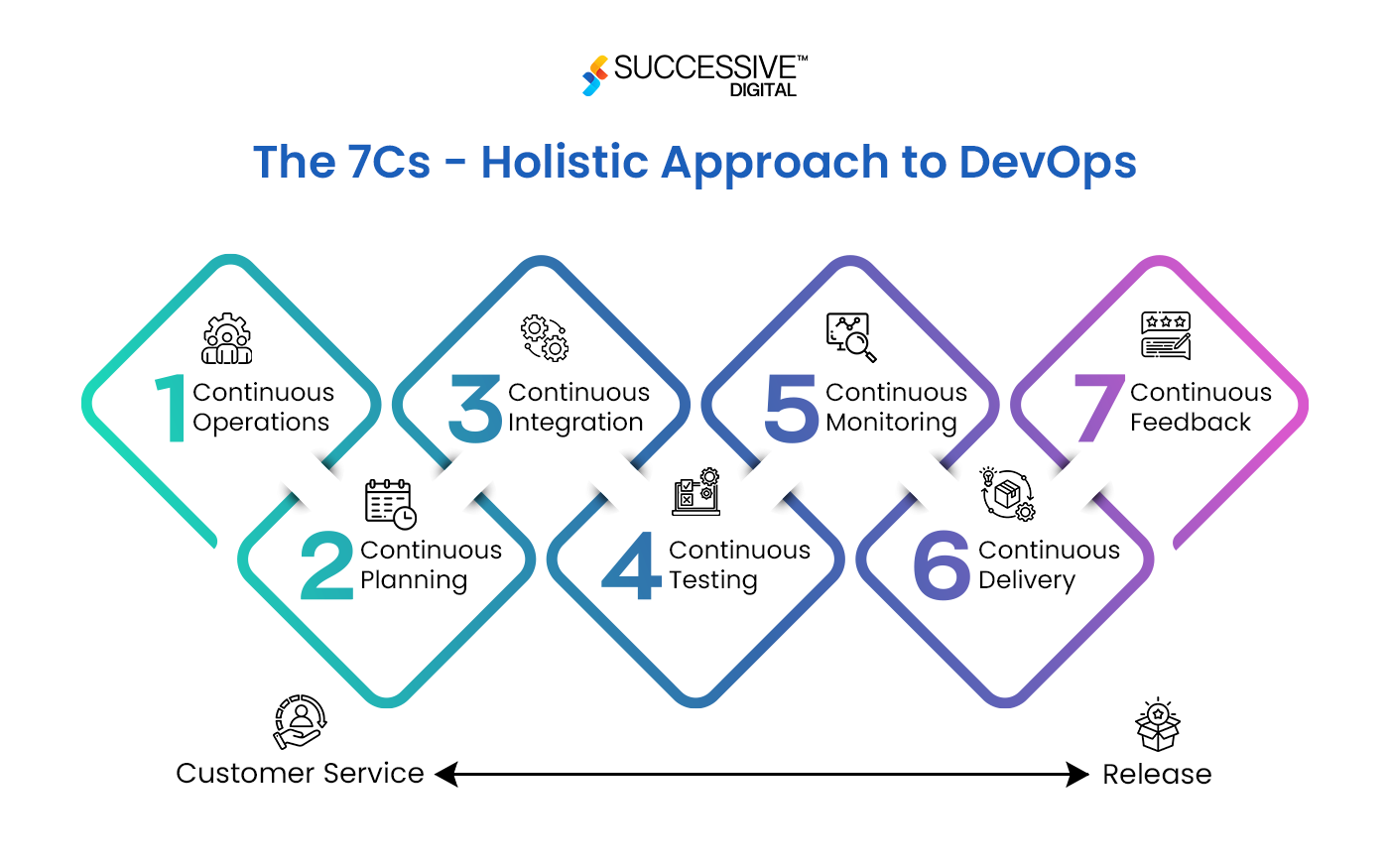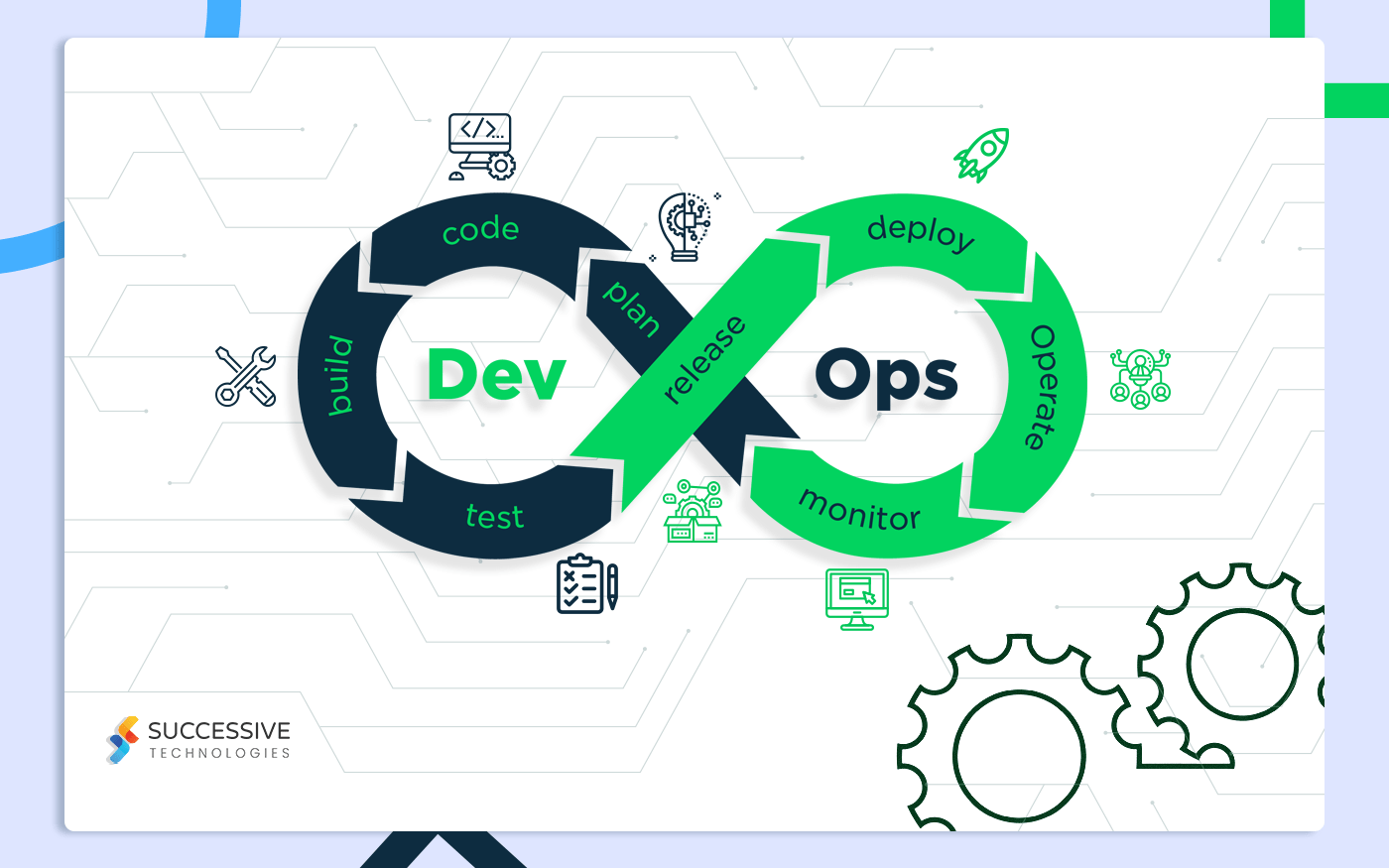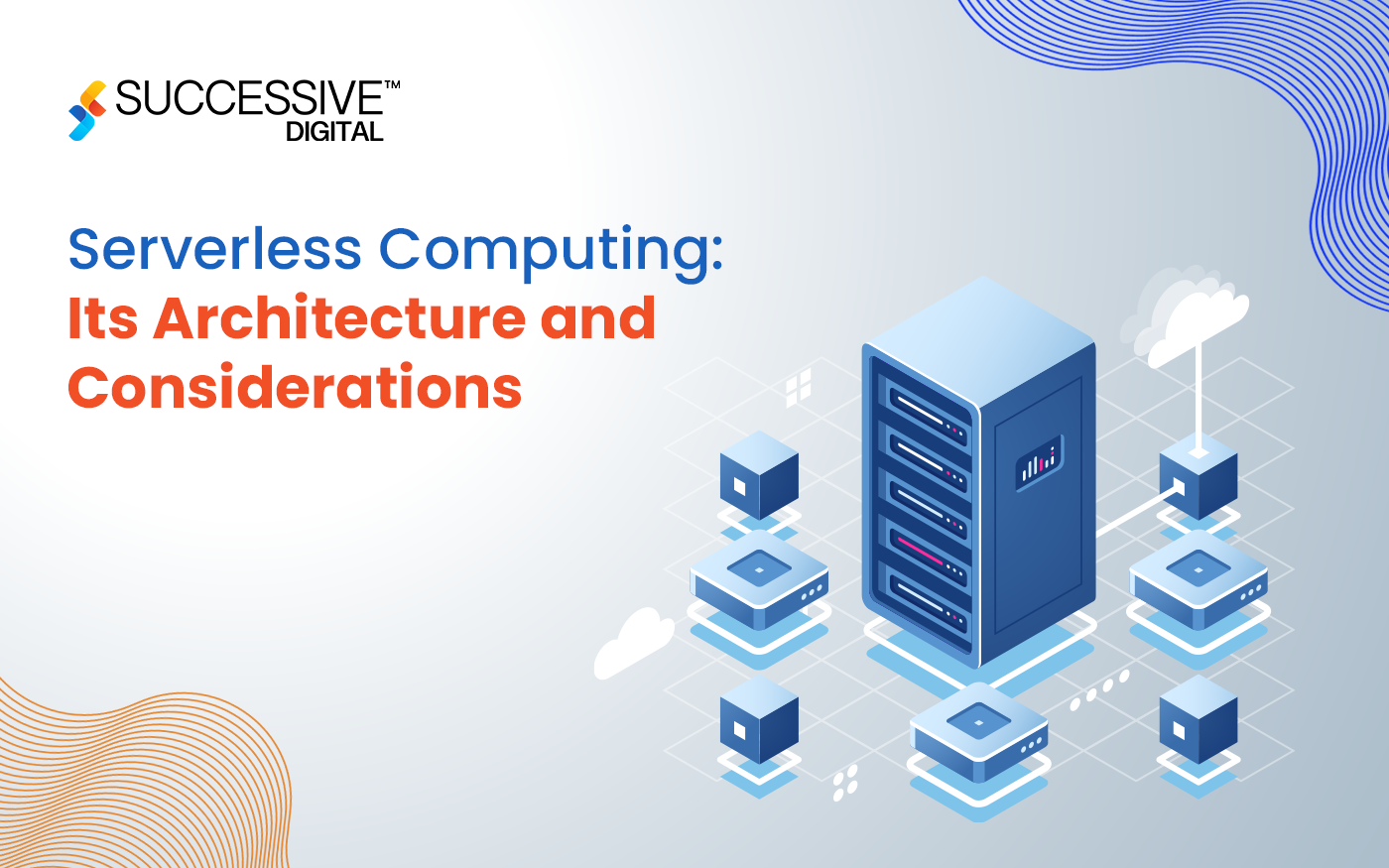Software development has come a long way, surpassing traditional approaches. The conventional division of responsibilities between operations and development has often led to snags, hold-ups, and poor software quality. However, the introduction of DevOps marked an unprecedented shift in optimizing processes and tackling persistent issues. DevOps for software development has emerged as an essential component of success for companies worldwide in the digital era.
More than having an excellent product and a robust strategy, delivering high-quality software is necessary for success in this dynamic industry. The development process’s pace can determine the success or failure of an organization.
DevOps fosters a culture shift that strives to provide higher-quality software much faster and is regarded as the next evolutionary leap in cross-functional team collaboration. This blog will help you understand DevOps in detail and why it is essential to contemporary software development.
DevOps: An Overview
The software development (Dev) and IT operations (Ops) are combined into a coherent framework by the constantly evolving principles and set of practices known as DevOps. Its primary objective is to enhance and expedite the software development process by promoting cooperation between the operations and development teams.
The development and operations lifecycle, from planning, building, and deployment to testing, monitoring, and iterating, is encompassed by DevOps. Communication, transparency, adaptability, and automation are essential for DevOps. Fundamentally, DevOps is a cultural revolution that encourages cross-functional teams to work together, communicate, and integrate.
It promotes ideas that support quick and dependable software delivery, including automation, infrastructure as code (IaC), continuous integration, and continuous delivery/deployment (CI/CD). DevOps creates a unified approach by removing silos. It unifies the historically separate roles of development and operations by coordinating goals, processes, and toolchains, allowing for a more streamlined, effective workflow.

Key Benefits of DevOps
Below are the key benefits of DevOps. Let’s dive into the details:
Improved Collaboration and Communication
DevOps fosters smooth collaboration and communication, which changes the dynamics of the organization. It simplifies processes by dismantling silos between operations, development, and other divisions. Real-time communication is ensured by this synergy, which improves openness and collaboration amongst cross-functional teams. The outcome? Quick decision-making, fewer bottlenecks, and a coordinated strategy for accomplishing shared objectives.
Accelerated Development Cycle and faster time to market
The ability to accelerate the development cycle is the core of DevOps. It drastically reduces the time needed for development, testing, and deployment by automating procedures and promoting continuous integration and deployment. In addition to increasing productivity, this speed guarantees faster product launches, satisfying consumer needs and establishing a competitive advantage.
Enhanced Quality and Reliability of Software
Continuous integration and deployment (CI/CD) is a critical component of DevOps, prioritizing software excellence over speed. It maintains a strict quality control procedure with automated testing, continuous monitoring, and iterative improvements. This leads to more dependable software, which lowers errors and improves user experience, strengthening client loyalty and trust.
Automations
DevOps is centered around the freedom from manual, repetitive tasks. Teams can devote more time and resources to strategic and innovative projects with the help of automations. This aspect of DevOps makes it possible to automate code deployment, configuration management, and infrastructure provisioning, among other tasks, with greater efficiency, fewer errors, and consistent, trustworthy results.
The 7Cs of DevOps
A comprehensive approach to software development and deployment is represented by the 7Cs of DevOps, which strongly emphasize cooperation and ongoing improvement:
Continuous Operation
It guarantees the software will continue functioning smoothly and dependably after distribution. Continuous monitoring, maintenance, and assistance are necessary to ensure uninterrupted services for end customers.
Continuous Planning
Continuous planning is encouraged by DevOps to match business objectives with development goals. It uses iterative planning cycles to ensure that it can be adjusted to changing market conditions and technological breakthroughs.
Continuous Integration
The approach entails incorporating code modifications into a shared repository regularly. This guarantees the developers’ code integrates seamlessly, reducing integration concerns and allowing for rapid feedback loops.

Continuous Testing
Continuous testing is encouraged at every level of development by DevOps. Automated testing ensures high software quality and dependability by facilitating the rapid detection and resolution of problems.
Continuous Monitoring
This entails monitoring apps and infrastructure in real time. It provides insights into system performance, detects bottlenecks, and allows proactive changes to ensure optimal performance and availability.
Continuous Delivery
Automating the deployment pipeline is a critical component of DevOps, allowing for more frequent and dependable software releases. Code updates may be delivered to end users more quickly since it guarantees that they are always prepared for deployment.
Continuous Feedback
This aspect creates a feedback loop across teams and stakeholders. Feedback helps identify improvement areas, refine procedures, and enhance collaboration, eventually driving continuous improvement throughout the development lifecycle.
Real-World Applications
Let’s dive into the real-world applications of DevOps:
E-commerce Platforms
*DevOps makes Continuous deployment possible, guaranteeing smooth updates, improving user experience, and managing heavy traffic during peak hours.
Financial Services
*DevOps ensures data protection and compliance adherence by integrating security controls at every stage and facilitating safe, legal, and effective software delivery through facilitating DevSecOps practices
Healthcare and Telemedicine
*DevOps makes Efficient telemedicine solutions possible, which expedites software development and ensures scalability, reliability, and continual improvement in healthcare applications.
Entertainment and Media
*DevOps enables media companies to rapidly bring out upgrades, new features, and content to engage people seamlessly.
Automotive Industry
*DevOps ensures safety, dependability, and quick innovation in the automotive sector by speeding up the development and integration of software in cars.
Travel and Hospitality
*DevOps makes Continuous deployment possible, guaranteeing that travel systems can manage peak demand, deliver real-time updates, and improve user experience.
AI & ML Integration
The strategic convergence of DevOps and AI/ML is reshaping the modern tech-driven enterprise landscape. The data-driven insights and predictive powers of AI/ML are interwoven with the collaborative and automated principles of DevOps.
This integration uses AI/ML for anomaly detection, predictive analytics, and intelligent automation in the DevOps pipeline to provide an efficient and agile development cycle.
Through AI/ML, DevOps methods advance, improving operational effectiveness, facilitating proactive decision-making, and streamlining the continuous integration and deployment procedures.
This symbiotic interaction between DevOps and AI/ML promotes a more robust and adaptive technology environment, enabling enterprises to attain more creativity, dependability, and scalability.
DevOps in Cloud Computing
DevOps is the glue that holds the world of cloud computing together, uniting the infinite possibilities of cloud services with the agile development philosophy. DevOps, a paradigm shift in culture and operations, aligns with cloud computing concepts as it promotes collaboration, increases speed, and guarantees continuous delivery.
DevOps and cloud services are symbolic of each other because they focus equally on automation, scalability, and flexibility. Using DevOps approaches in cloud-based software development, enterprises can achieve numerous advantages.
Simplifying processes through DevOps allows apps to be tested, iterated, and deployed quickly. Because of their elasticity, cloud services provide an ideal environment for the growth of DevOps principles. This includes resource optimization, on-demand scaling, and a solid infrastructure-as-code methodology.
This integration presents a robust framework for practical, resilient, and future-ready software development in the cloud. It also speeds up time-to-market and streamlines development cycles. Quality is improved by automated testing.
Challenges and Solutions
DevOps is a technological and cultural revolution combining development and operations to optimize software delivery. Though it has many benefits, putting DevOps methods into practice is challenging. Below are the frequent challenges that occur with their respective solutions:
Cultural Resistance
| Challenge | Solution |
| Change resistance, segregated attitudes, and a lack of cross-functional communication can all stymie DevOps adoption. | Cultural change is essential. Encourage open communication, teamwork, and shared accountability across teams. To promote cultural change, promote training initiatives, leadership development, and information exchange. |
Toolchain Complexity
| Challenge | Solution |
| Handling various deployment, automation, and monitoring technologies can result in inefficiencies, complexity, and integration problems. | When it is feasible, standardize tools and make sure they are compatible. Invest in Integrated toolchains that promote smooth team collaboration and process streamlining. |
Security Concerns
| Challenge | Solution |
| Integrating security into the DevOps process can be difficult, exposing vulnerabilities and posing compliance issues. | Accept DevSecOps and integrate security procedures through the software development process. To proactively address security risks, perform automated security testing, frequent audits, and compliance checks. |
Scalability and Flexibility
| Challenge | Solution |
| Scalability and flexibility issues arise when extending DevOps processes throughout expansive and heterogeneous systems. | To achieve more flexibility, use containerization, microservices, and scalable architectures. Automate orchestration and provisioning of infrastructure to enable smooth scalability. |
Skillset and Expertise Gap
| Challenge | Solution |
| A lack of qualified experts knowledgeable about developing technology and DevOps procedures may impede advancement. | Invest in training and development programs for current teams. Encourage cross-functional training and continual learning to overcome the expertise gap. |
Continuous Monitoring and Feedback
| Challenge | Solution |
| Inadequate monitoring and feedback procedures might cause delays in discovering problems and implementing fixes. | Integrate feedback loops and reliable monitoring tools throughout the DevOps lifecycle. Encourage a culture of ongoing development by using monitoring system insights to provide actionable insights. |
Resistance to Automation
| Challenge | Solution |
| Efficient DevOps processes may be impeded by resistance or skepticism over automation. | Teams should be trained on the advantages of automation, focusing on how it may decrease human error, increase productivity, and facilitate quicker delivery. |
Managing Change and Version Control
| Challenge | Solution |
| Maintaining stability and consistency when handling several code versions and configuration modifications can be difficult. | Implement robust change management practices and version control systems. Automation of deployment pipelines increases uniformity while decreasing human errors. |
Success Story – What we did?
DevOps with CI/CD Implemented for Business Consulting Firm
A business consulting firm had significant challenges when upgrading its IT infrastructure to accommodate growing data volumes and user demands while doing away with manual procedures to expedite release cycles. Our team implemented scalable DevOps solution by utilizing Amazon Web Services and technologies such as SonarQube, SSL, Node, and Angular, emphasizing improving security and operational efficiency.
We transformed their development process by implementing an automated CI/CD pipeline, allowing engineering teams to publish updates in minutes instead of hours or weeks. Along with reducing integration problems, increasing customer satisfaction, minimizing human intervention in the deployment process, and strengthening security and compliance measures through SSL certification—which guarantees user trust and collaboration integrity—this redesign also sped up the time it took to release the application.
Outcomes-
- 80% Faster Deployment
- 100% Real-Time Communication
- 70% Infrastructure Automation
- 100% Managed SaaS Application
The Future of DevOps
DevOps is expected to play a significant role in future software development and operations. As technology develops, DevOps will merge with new trends like AI and machine learning, bringing predictive analytics and automation to previously unheard-of levels. DevOps processes will include security easily, encouraging a proactive approach to risk mitigation. Infrastructure management will change paradigm due to the growing use of cloud-native technologies, serverless computing, and edge computing. This will allow for unmatched scalability and flexibility. DevOps for software development is every industry’s new norm to adopt and encourage.
Emerging Trends in DevOps
DevOps has become integral to the software industry. DevOps has streamlined the SDLC and enhanced the overall productivity of the organization. Below are the top trends we will witness:
DevSecOps
Utilizing DevSecOps allows software development lifecycle security measures to be integrated early. The goal is to guarantee that security measures are integrated into the development process, lowering risks and vulnerabilities. To this end, it strongly emphasizes collaboration among engineering, operations, and security teams.
Serverless Computing
Developers can focus entirely on building and deploying code since serverless computing abstracts infrastructure management. It involves optimizing scalability and cost-effectiveness by billing based on usage rather than allotted capacity and running code without managing servers.
AIOps
AIOps combines automation, analysis, and monitoring to identify deviations and anticipate possible issues, reducing downtime and improving system reliability. Its adaptability and evolution in changing IT environments make it vital since it enables more effective, data-driven decision-making processes. Businesses can maximize operational efficiency and eventually guarantee a more robust and flexible DevOps ecosystem by utilizing AIOps. Analyzing large datasets, forecasting problems, automating solutions, and enabling proactive IT system management improves observability.
MLOps
MLOps optimizes machine learning model creation, deployment, and maintenance. Its importance comes from its capacity to manage the complete lifecycle of ML and AI models, guaranteeing their efficiency, scalability, and dependability across the Generation AI pipeline. This integration is essential since it tackles specific challenges presented by developing AI models, such as data drift, model versioning, and continuous monitoring.
Infrastructure as a Code
Infrastructure as Code uses code and automation to manage and deliver infrastructure in place of manual procedures. Programs like Terraform and Ansible make a declarative infrastructure configuration possible, guaranteeing QA consistency, scalability, and effective resource management.
Edge Computing
Edge Computing relocates computational capacity closer to data sources and end users. It minimizes latency by processing data close to the edge devices, enabling real-time data analysis and faster application response times.
SRE
SRE ensures systems are scalable and reliable through an observability mechanism. Reducing downtime and boosting productivity entails integrating software engineering concepts into IT operations to build scalable and dependable software systems.
Low/NO Code
Low/No Code platforms allow users to create applications without coding skills. They include visual interfaces, drag-and-drop functionality, and pre-built components, which democratize application development and reduce time-to-market.
Cloud Native Evolution
It describes creating apps, especially for cloud settings. Scalability, portability, and resilience across various cloud platforms are optimized using microservices, containers, and orchestration technologies such as Kubernetes.
Conclusion
DevOps for software development has completely changed the development and deployment process. It has helped businesses bring together teams from operations and development to collaborate effectively on a shared objective, improving comprehension of the application’s needs and deployment strategy. It gives enterprises several advantages, such as a faster time to market, better quality, and higher customer satisfaction. Businesses may deploy software more quickly, accurately, and at a higher rate when they use agile development techniques, automation, and continuous integration and delivery.












